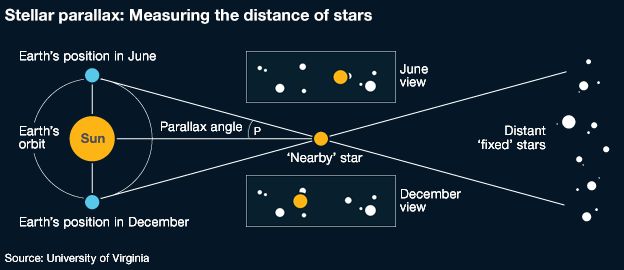Gaia
Message boards :
Science (non-SETI) :
Gaia
Message board moderation
| Author | Message |
|---|---|
Sirius B  Send message Joined: 26 Dec 00 Posts: 24879 Credit: 3,081,182 RAC: 7 
|
|
 Lynn Lynn Send message Joined: 20 Nov 00 Posts: 14162 Credit: 79,603,650 RAC: 123 
|
Exciting! |
 Gordon Lowe Gordon Lowe Send message Joined: 5 Nov 00 Posts: 12094 Credit: 6,317,865 RAC: 0 
|
I don't understand this statement about "What does Gaia see?" I thought our solar system was on the outskirts. How could the sun do this?: The Sun moves around the centre of the Milky Way at a speed of about 220km/second (10,000,000,000 miles/hour)  The mind is a weird and mysterious place The mind is a weird and mysterious place
|
 Lynn Lynn Send message Joined: 20 Nov 00 Posts: 14162 Credit: 79,603,650 RAC: 123 
|
I don't understand this statement about "What does Gaia see?" I thought our solar system was on the outskirts. How could the sun do this?:[/quote ESA’s Gaia satellite more info: Gaia's first galaxy map The astronomy world is abuzz today because of ESA's announcement of the first release of data from the Gaia mission. Gaia is a five-year mission that will eventually measure the positions and motions of billions of stars; this first data release includes positions for 1.1 billion of them, and proper motions for 2 million. The map below does not show all 1.1 billion stars; rather it's a map of the density of stars that Gaia has measured so far, with brighter areas corresponding to more stars. |
 Gordon Lowe Gordon Lowe Send message Joined: 5 Nov 00 Posts: 12094 Credit: 6,317,865 RAC: 0 
|
I don't understand this statement about "What does Gaia see?" I thought our solar system was on the outskirts. How could the sun do this?:[/quote Yes, but that still doesn't really answer my question.  The mind is a weird and mysterious place The mind is a weird and mysterious place
|
 Lynn Lynn Send message Joined: 20 Nov 00 Posts: 14162 Credit: 79,603,650 RAC: 123 
|
 As the Earth goes around the Sun, relatively nearby stars appear to move against the "fixed" stars that are even further away Because we know the Sun-Earth distance, we can use the parallax angle to work out the distance to the target star But such angles are very small - less than one arcsecond for the nearest stars, or 0.05% of the full Moon's diameter Gaia will make repeat observations to reduce measurement errors down to seven micro-arcseconds for the very brightest stars Parallaxes are used to anchor other, more indirect techniques on the 'ladder' deployed to measure the most far-flung distances |
 Julie Julie Send message Joined: 28 Oct 09 Posts: 34053 Credit: 18,883,157 RAC: 18 
|
|

©2024 University of California
SETI@home and Astropulse are funded by grants from the National Science Foundation, NASA, and donations from SETI@home volunteers. AstroPulse is funded in part by the NSF through grant AST-0307956.